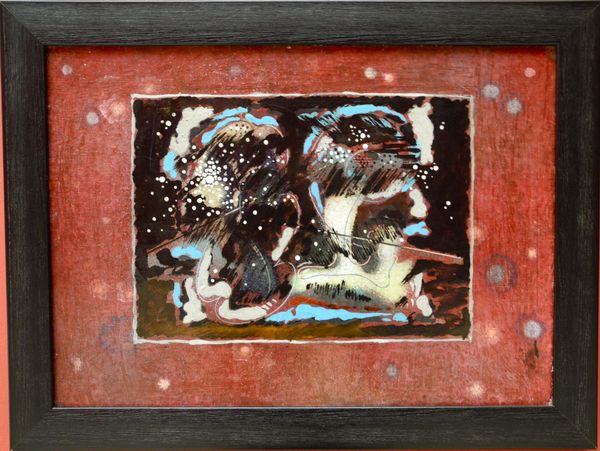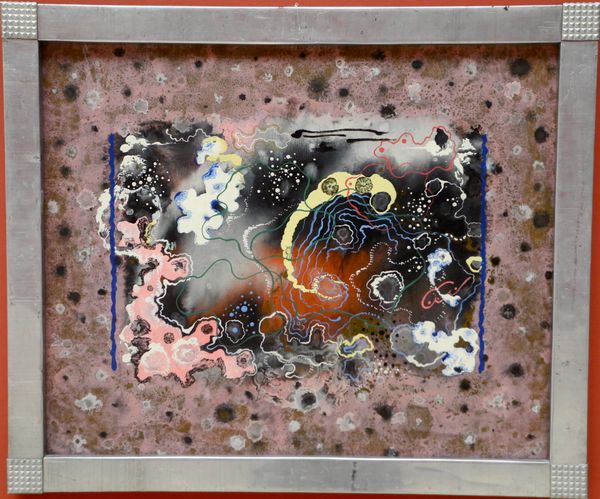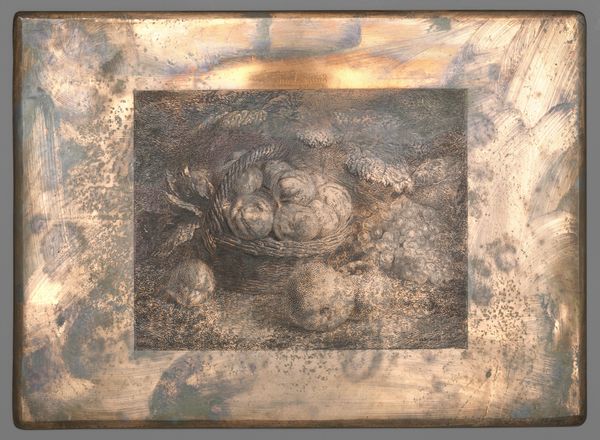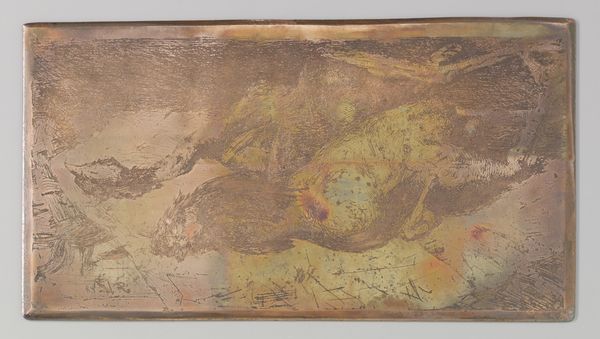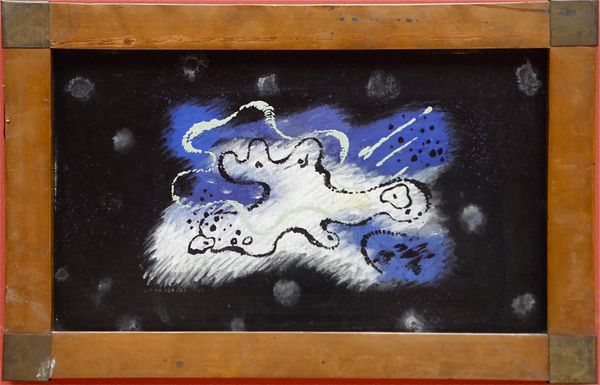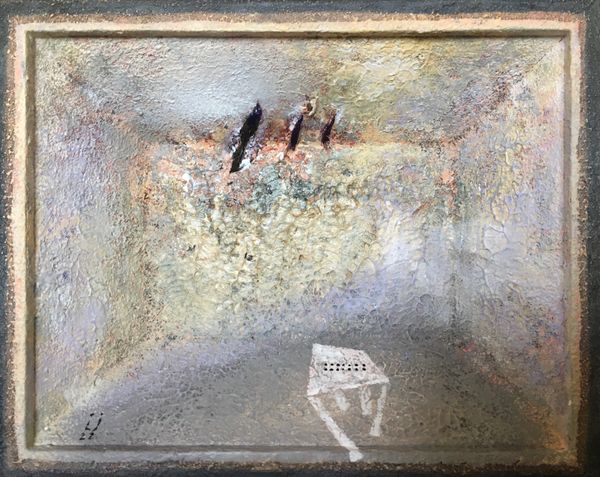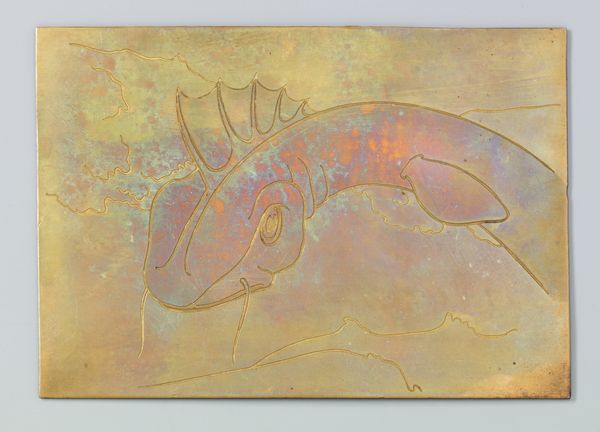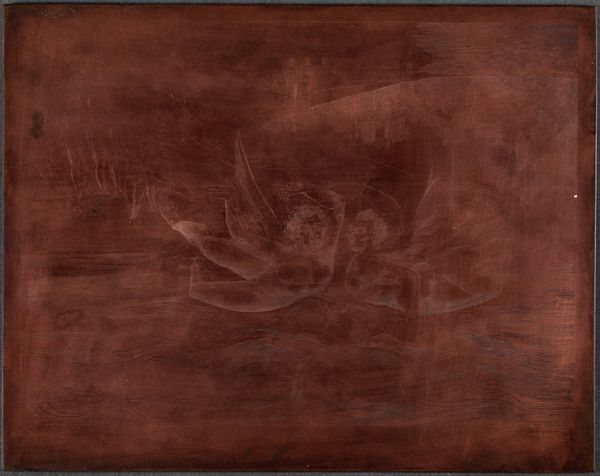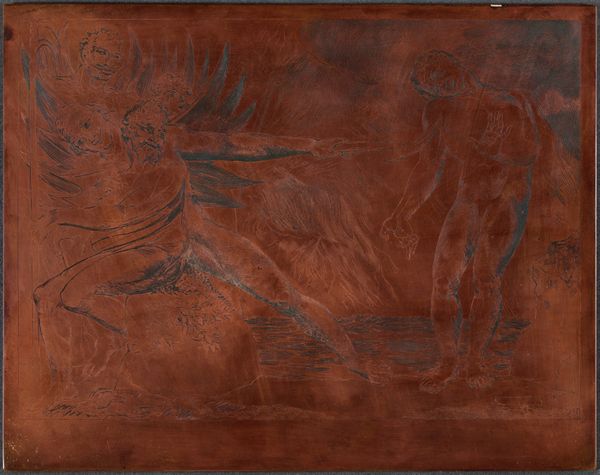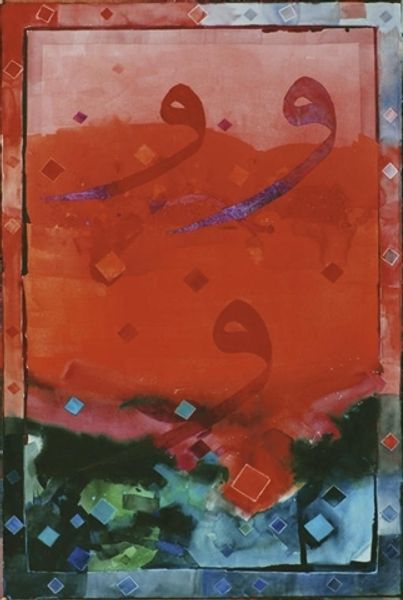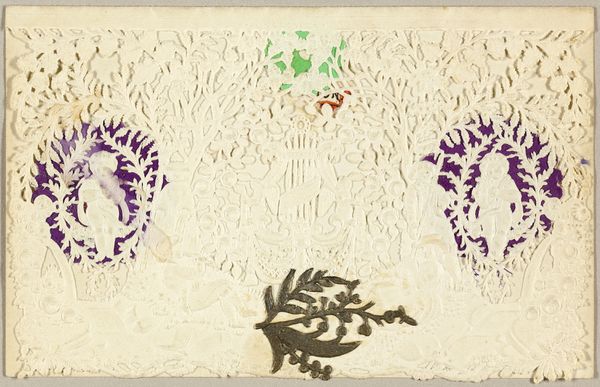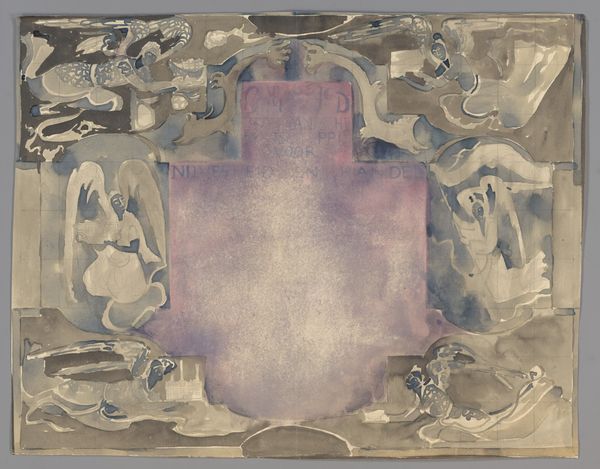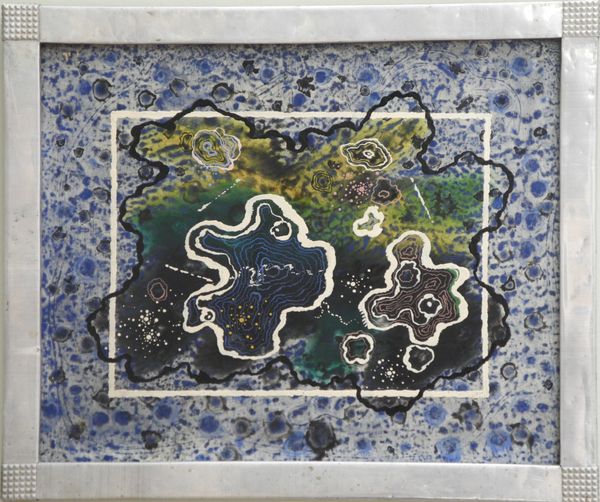
mixed-media, watercolor
#
gouache
#
mixed-media
#
water colours
#
watercolor
#
geometric-abstraction
#
abstraction
#
mixed media
#
modernism
Copyright: David Kakabadze,Fair Use
Editor: Kakabadze's "Abstraction," created in 1927 using mixed media, feels oddly contained, almost like a diagram or an exploded view, despite the ambiguous forms within. How should we interpret a work like this, set within such a strong frame? Curator: That frame is critical, isn’t it? It's not merely a border but a defining structure, setting up a dynamic tension between the inner world of abstract forms and the outer, seemingly fixed, world. Consider the period. Kakabadze, alongside other Georgian modernists, was navigating a complex socio-political landscape under early Soviet rule. What role might abstraction play in such a context? Editor: Perhaps a form of coded expression? The ambiguous shapes become symbols, and the strong frame is like… a state boundary? Curator: Precisely! Abstraction provided a way to engage with ideas outside the prescribed Socialist Realism, ideas about individual expression, utopian dreams, even subtle critique. How does this geometric abstraction subvert, or perhaps re-imagine, traditional notions of national identity during that era? Notice how he combines seemingly disparate elements – geometry with what appears to be free-form spray. Editor: That’s interesting because it does feel both structured and spontaneous. So, the museum displaying it now… are we complicit in framing it a certain way, too? Curator: Absolutely. Museums inherently create narratives through display, collection, and interpretation. By placing it within our specific gallery context, we inevitably shape its reception and influence public perception of both the artwork and the period it was created in. This also impacts Georgian and Soviet history in art. What’s most vital is for the artwork to provoke viewers to ponder these complexities themselves. Editor: I see. Thinking about the layers of frames – physical and institutional – really opens up the work's possible readings. Curator: Indeed. The work exists both as an aesthetic object and a product of particular historical, political, and cultural circumstances. It's crucial to consider its production and reception.
Comments
No comments
Be the first to comment and join the conversation on the ultimate creative platform.
